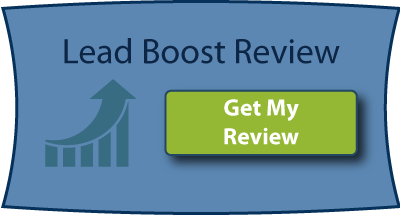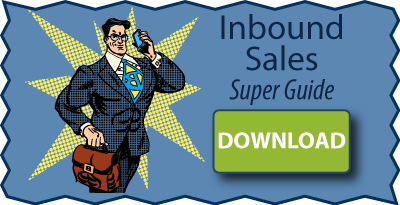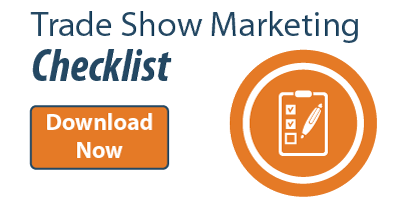Do you stand out? If you don’t stand out, you blend in. And you do NOT want to blend in.
To succeed in business you need to do something different. You need to be remarkable.
rəˈmärkəb(ə)l
adjective: remarkable
- worthy of attention; striking.
- worth making a remark about.
Yes, remarkable means something that’s striking or worth noticing. But, it also means something that’s worth making a remark about—worth talking about.
Very good is bad—it’s still average. Anyone who’s been around for a while is very good. To channel Donald Trump, “Average is for losers.”

A few of you are thinking, “Great, I am already remarkable, now what?” Most of you are wondering, “How in the world can I make my company remarkable?” Keep reading, and I’ll answer both questions.
How to be remarkable
Step 1. Who Actually Cares?
No matter what, you can’t be remarkable for everyone. People have different preferences and will respond to different remarkables.
Instead, you have to choose who you want to serve and learn who actually cares. Pull out your Precise Prospect Profile. If you don’t have a prospect profile, make a second resolution to: Create My Precise Prospect Profile in the first quarter of 2016. Need Help? Download the Precise Prospect Profile kit.
Focus on your ideal prospect. They should care passionately about your business. If not, you’ve got a “nice to have” product or service. Work on becoming indispensable.
Before going too far, I’ll go ahead and tell you the bad news. If you want to be remarkable, you’re going to annoy some people. It’s weird, but to have some people love you, you have to accept that some will hate you. Sorry.
It’s not safe or comfortable to be remarkable. It is, however, highly profitable.
Step 2. Deliver a Micro-Remarkable
Here’s a good practice. Do something small that makes a difference. Take an existing customer and create something remarkable.
Choose the customer because they are important to you, have been with you for a long time, or because they represent your ideal customer.
Even better, involve them in the process. Develop some potential remarkables internally. Then, go to the customer, present the remarkables, and ask them to select the best one.
Go further. Ask them to help you expand the potential remarkables list. Deliver on one or all of them if you can. They will eagerly tell their friends.
Delivering micro-remarkables is an excellent practice. Do it on an ongoing basis. You’ll delight your customers and become adept at seeing new remarkables.
Step 3. What Do Customers Hate About Your Company or Industry?
Every industry has accepted practices and ways of doing things. And some customers absolutely hate the way the products or services are delivered.
How many of you feel good about getting an itemized bill from an attorney showing tenths of an hour billed at $400 per hour?
Some of you are thinking, “Yea, I know they hate _____, but it has to be that way because …” Does it really? Could you do things differently, erase the annoyance, and increase your profits? It takes creativity, but there’s often a way.
Step 4. Edgecrafting
Seth Godin wrote about being remarkable in The Purple Cow. Later on, he coined the phrase, “edgecrafting.”
Remarkability lies in the edges. The biggest, fastest, slowest, richest, easiest, most difficult. It doesn't always matter which edge, more that you're at (or beyond) the edge.Seth Godin
You can get an overview of Seth’s ideas by watching his TED video:
Here’s how edgecrafting works. Find the edges of a product, a service, or a problem. Then, explore ways to shift the edge. As Seth points out, push the edge way out to create a competitive advantage.
This work is very specific to each company and market, so it’s hard to provide a great example. To know more, schedule a Remarkability Audit for your company. It’s free, and you’ll get at least one potential remarkable to evaluate.
Edgecrafting Strategy Canvas
Another way to do edgecrafting is to create a strategy canvas positioning diagram. Map the relevant dimensions of a market on a graph like the example below. What happens if you completely eliminate a dimension, or max out a dimension? What if you add something totally new to the mix?
In this example our company (Shown with an Orange Line) is similar to the industry (Blue Line) in dimension 1 and dimension 3. But, our company has reduced dimension 2 and significantly raised dimension 4.
Each dimension is a property of the product or service. Things like price, speed, or quality. Any dimension that matters is fair game.
- Speed
- Price
- Experience
- Stories
- Quality or Features
- Vision
- Culture
- Anything different that makes a difference (that matters).

Step 5. Why Are You in Business?
Look at “why.” Why are you in business? Why do your customers buy your product or service? Why did you start the business? Focus on the emotional reasons that go beyond profits.
At Inbound Team, we’re in business because we can’t stand to see companies struggle due to lack of leads. That's our "why."
Keep it simple. Look at this from a child’s perspective. Imagine that you are explaining what you do to a young child.
What change are you trying to make in your customers? Who do you want your customers to become? What change do you want to make for your customers and for the world?
Be human. Be connected. Be generous. Take a chance. Do something that might not work.
Find an idea where you’re afraid someone will say, “How dare you!” That’s how you’ll know you’re on the right track.
Step 6. Play the Remarkable Game
The remarkable game is great fun and it keeps you in practice. Pay attention as you encounter the world. Notice what works. How could each organization be more remarkable.
Go to a restaurant. What would make your experience more remarkable? What if they knew your name, read your mind, and knew exactly want you wanted to eat? What else could they do that would make your visit remarkable?
What would make your next internal meeting remarkable? How might your company culture be more remarkable?
Step 7. Tell Your Remarkable Story
Once you’re different, make sure to tell the story–get your messages clear and aligned. Does the home page on your website tell the story?
Companies that sell to other businesses often struggle to communicate effectively. A lot of context is required, so the explanation becomes too long and too complex.
Having a good story is one way to cut through the complexity. Tell a story about one small part of your product or service. It will make prospects curious to hear more.
All stories are invented, and it’s okay to be creative and embellish the details. Human beings love stories and your company is full of stories just waiting to be told. Create your remarkables and find the stories that will help your prospects hear and understand.
You Are Remarkable, But You Aren’t Done Yet
Now you’ve found or invented some great remarkables. Cool, but you aren’t done yet.
Being remarkable is an ongoing practice. Your competitors will steal remarkables where they can (this is also called “progress”). You have to constantly invent new remarkables. Welcome to the 21st century.
Review your remarkables and update your positioning chart regularly—once or twice a year. Keep looking for ways you can change the world.
And keep finding new stories that showcase your remarkables.
Takeaways
- Be remarkable or invisible—your choice.
- Being remarkable takes work. It’s some of the hardest work you’ll do in business. Do it anyway!
- You may have remarkables you are taking for granted. It’s easy to be so close to your company that you can’t see. Get a remarkability audit for help seeing who you really are.
- Take the challenge and promise to make your company remarkable in 2016.
Remarkability Audit
This is hard. Don’t get stuck. Get a Remarkability Audit, and I’ll help you discover your remarkables.















